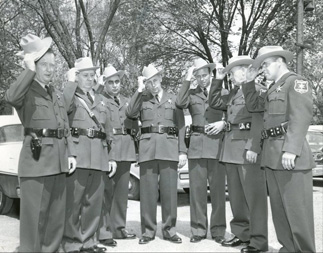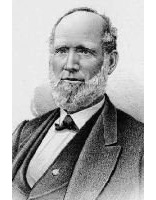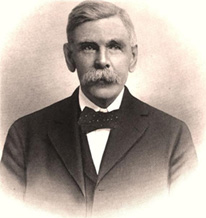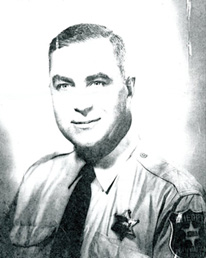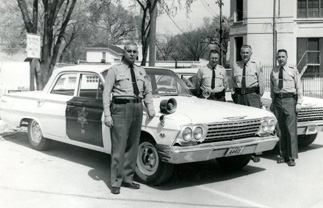Pottawattamie County Sheriff's Office
1400 Big Lake Road
Council Bluffs, Iowa 51501
Office: 712-890-2200
Non-Emergency : 712-328-5737
Emergency: 911
History
The Pottawattamie County Sheriff's Office consists of 51 sworn deputies, 13 reserve deputies, 92 detention officers and 8 civilian support staff. The Road Patrol Division is responsible for patrolling approximately 1200 square miles of roads within the county, as well as, approximately 89,000 residents. The Jail Division operates a 288 bed direct supervision jail facility. The Jail is a secure detention facility holding pre-trial detainees as well as male and female sentenced inmates. The Jail receives new bookings directly from Sheriff's Patrol and other county law enforcement agencies such as the Council Bluffs Police Department, the Carter Lake Police Department, the Avoca Police Department and the Iowa State Patrol.
Pottawattamie County was established on February 24, 1847. Pottawattamie County evolved out of the Pottawattamie Purchase of 1847. It was named for the Indian tribe that once possessed the Iowa Territory. The name is an Indian term meaning "Blowers of Fire", "Keepers of the Council Fires" or "Makers of Fire".
The county commissioners proposed Kanesville and Pleasant Grove, about 8 miles apart, for the county seat. At an election held April 7, 1851, all but seven votes were cast for Kanesville, named for Colonel Kane of Philadelphia. Council Bluffs was previously known as Hart's Bluff and then Miller's Hollow before it became Kanesville. Hyde's New Hall at Kanesville, which was renamed Council Bluffs on January 19, 1853, was used for several years for the court house.
A two-story court house, constructed of stone and brick was finally built between 1866 and 1868 at Council Bluffs, at a cost of about $50,000.00. An election was held March 10, 1885 to decide on a bond issue for the purpose of building a new $150,000 court house and a $30,000 jail. The bond issue passed with a vote of 5,232 for and 2,933 against. The county accepted the white limestone building on February 15, 1888. In the fall of this same year, the electric street railway between Council Bluffs and Omaha was completed.
On August 22, 1973, Pottawattamie County voters approved a $2.5 million bond issue for the construction of a new county court house and jail on a vote of 4,819 to 1,215 or 79% approval. Additional funds for the $4.5 million project were obtained from a federal jail construction grant and from federal revenue sharing funds. Upon completion of the 5-story building, located west and south of the court house grounds, the 1888 court house was torn down to make room for a parking lot.
Prominent Sheriffs:
Prominent Sheriffs who affected the most change in Pottawattamie County
Sheriff William S. Townsend (1848) On September 21, 1848 Sheriff William S. Townsend held Pottawattamie County's first election. As a result of the election, the county was organized. Judge Carlton appointed Sheriff Townsend for the purpose of organizing the county. Without this, future elections could not have been held. Sheriff Townsend held office for a very short time.
Sheriff Dr. Seth H. Craig (1859 - 1861) was appointed Sheriff in August of 1859, but resigned in 1861 to enter General Dodge's regiment in the Fourth Iowa where he later became Captain of Company B. Sheriff Seth also served two terms as warden at the penitentiary at Fort Madison, Iowa.
Sheriff Homer H. Field (1865 - 1867) served with distinction during the Mexican War. Also, serving as the Provost Marshall he conducted the first and only Civil War draft held in Pottawattamie County on November 5, 1864. During Field's term as Sheriff, General Sherman and Sheridan who visited Council Bluffs accompanied General Ulysses S. Grant, who was running for the Presidency. Sheriff Field later served as Chief of Police in Council Bluffs from 1881-1884. In January of 1892, he was elected to the Board of Education.
Sheriff Roy O. Wichael (05/01/1960 - 06/30/1975) was recognized for modernizing the Sheriff's Office by employing twenty-two deputies and eighteen special deputies during his fifteen years as Sheriff. Sheriff Wichael is noted for carrying out the execution of Charles E. Brown in 1962, who was one of the last men to be hanged in Iowa. Sheriff Wichael also witnessed the hanging of Brown's accomplice, Charles Kelly. Both men were convicted of murdering a Walnut, Iowa man. Sheriff Wichael died at the age of 73 on June 30, 1975.
Sheriff Lynn G. Ford (08/15/1975 - 09/01/1983) was a former Trooper with the Iowa State Patrol who is credited with bringing 24-hour patrols to the county. Sheriff Ford was also responsible for running the jail that was built in the new court house in 1977. Also in 1977, Sheriff Ford established the county's multi-channel radio system complete with NCIC and teletype capabilities. Sheriff Ford developed the Sheriff's Office's first Investigative Division. Sheriff Ford raised personnel standards by thorough testing of applicants. He also established the office's first operational Rules and Regulations manual. Sheriff Ford also established the first contract law enforcement as well as the first Alcohol Safety Action Program.
Sheriff Ford resigned in September 1983 to pursue a career in the private sector. Sheriff Ford was a very competent and professional Law Enforcement official who, through his leadership helped make the Pottawattamie County Sheriff's Office one of the best in the State of Iowa.
Michael D. Kerns (10/14/1983 - 12/31/1992) was appointed by the Board of Supervisors to fill the vacancy left by Sheriff Ford's resignation. During Sheriff Kerns' tenure he continued the trend started by Sheriff Ford in allowing the Sheriff's Office to progress. Sheriff Kerns arranged the purchase of a Mobile Communication van that allowed contact with deputies in the event the court house was damaged. Sheriff Kerns also implemented the DARE program. Sheriff Kerns also converted the weapons carried by the deputies from revolvers to the 9mm semi automatic handgun. Sheriff Kerns also purchased four-wheel drive vehicles for use on road patrol. Sheriff Kerns did not seek re-election in the November 1992 election.
Jefferey D. Danker (01/01/1993 - 12/31/2020) was elected Sheriff in the November 1992 election. Sheriff Danker began almost immediately in proposals to build a new jail. This was done by soliciting the help from the public. Sheriff Danker formed a committee of the following people:
Ted Baker - Council Bluffs
Keith Burgett - Council Bluffs
Ron Caddell - Carter Lake
John Dalton - Council Bluffs
Lynn Ford - Council Bluffs
John Innes - Council Bluffs
Ray Oelkers - Council Bluffs
Merlene Sievers - Walnut
Bob Soloth - McClelland
Ron TeKippe - Council Bluffs
Jim Wilkinson - Council Bluffs
Bob Williams - Crescent
With the assistance of the Jail Committee the citizens of Pottawattamie County voted, and passed, the bond issue for the construction of the new jail with an overwhelming support of 82%. The jail was opened in October of 1999 with a capacity of 288 beds.
Sheriff Danker also committed two deputies to the Southwest Iowa Narcotics Task Force. The task force involves the following Law Enforcement Agencies: Council Bluffs Police Department, Mills County Sheriff's Office, Harrison County Sheriff's Office and the Iowa Department of Narcotics Enforcement.
On May 24, 1994, Sheriff Danker implemented a Citizens Advisory Committee. The committee meets every 3 months and is kept informed of the ongoing issues within the Sheriff's Office.
Sheriff Danker, working with the Board of Supervisors, was able to increase the uniformed strength of the Sheriff's Office to 50 deputies. There is also an additional strength of 23 Special Deputies.
In 1998, Sheriff Danker implemented the Shop with the Sheriff Program. It allows the Sheriff and deputies to escort children through the Target department store and allow them to buy gifts for Christmas. The Shop with the Sheriff program also purchases groceries from Hy-Vee for a complete Christmas dinner to be provided to all of the families.
Sheriff Danker also purchased a self-contained, 28-foot Communications trailer and mobile command post and implemented motorcycle and bicycle patrols, in addition to reasserting the Emergency Response Team (ERT/SWAT).
In 2007 Sheriff Danker took over the management of the emergency 911 Communications Center. In 2009, the Sheriff’s Office rolled out the new county seven site 800 MHz digital communication system that replaced the previous two way system. The new digital system is used county wide by all public safety responders and others like the County Engineers Office and Council Bluffs Public Works. The new system also provides the ability to communicate with other jurisdictions such as Omaha, Douglas, Sarpy and Washington Counties in Nebraska.
Sheriff Danker served on the Iowa State Sheriff's and Deputies Association as a member of the Board of Directors, Fourth Vice President, Third Vice President, Second Vice President, First Vice President, Secretary/Treasurer, and, finally, as President. Sheriff Danker also served on the Gold Star previously on the Legislative Committee and Schools Committee and is currently serving on the Editorial Committee.
Andy Brown (01/01/2021 - Present) was elected Sheriff in the November 2020 election. He succeeded Sheriff Danker to become the first new Sheriff of Pottawattamie County since 1993. Sheriff Brown has served in the Pottawattamie County Sheriff's Office since 1999 when he began his career as a Detention Officer. He served as a Special Deputy Sheriff from 2001 until he became a full-time Deputy Sheriff for Pottawattamie County in 2003. Sheriff Brown went on to hold the ranks of Corporal, Sergeant, Lieutenant, and, now, Sheriff.

